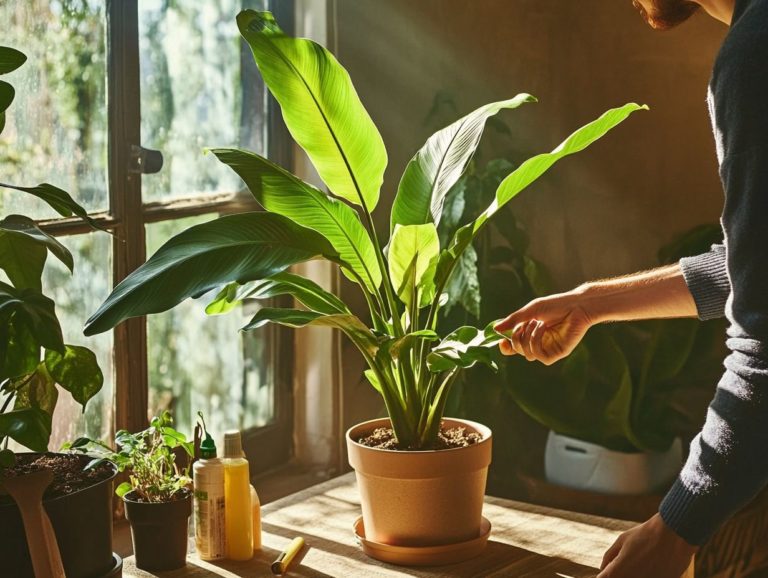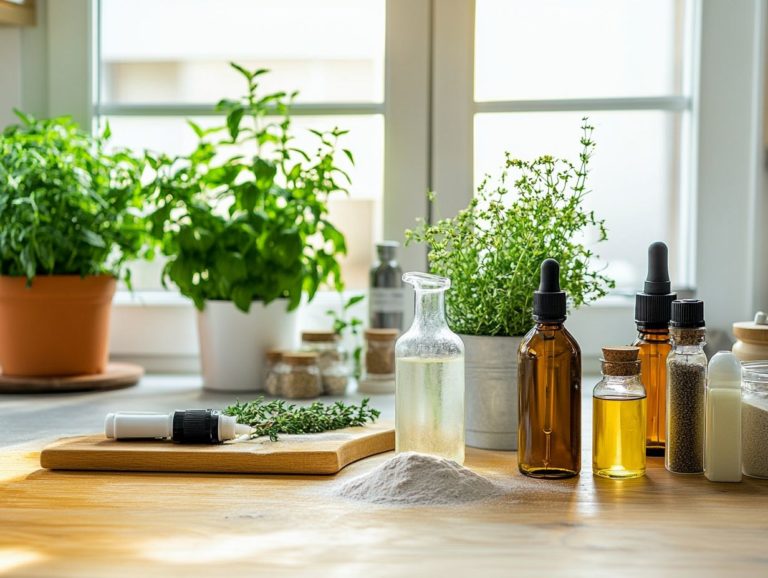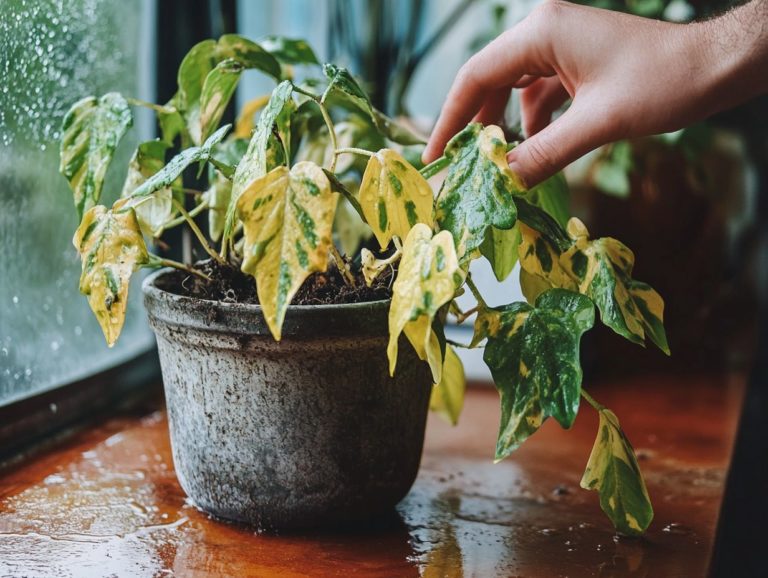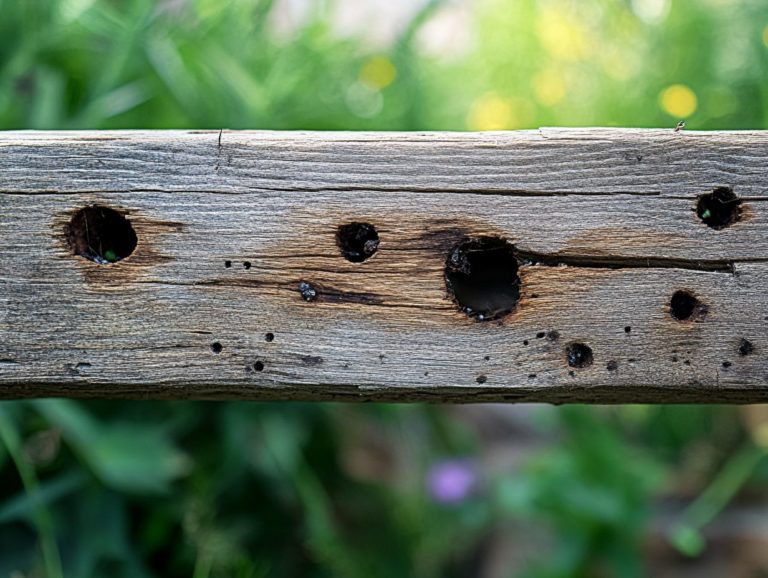The Importance of Stress-Free Plants
Stress in plants is more prevalent than you might think. It affects their growth, health, and overall vitality. Understanding the various causes and effects of plant stress is essential for you as a gardener or horticulturist.
This article delves into the advantages of maintaining stress-free plants, which range from improved growth to enhanced resilience. You ll learn to identify signs of stress, discover effective management techniques, and explore recommendations for stress-resistant plant varieties.
Find out how to create the optimal environment that ensures your plants not only survive but thrive. Get ready to cultivate healthier, happier plants that will flourish under your care!
Contents
- Key Takeaways:
- Understanding Stress in Plants
- Benefits of Stress-Free Plants
- Identifying and Managing Stress in Plants
- Choosing Stress-Resistant Plants
- Creating a Stress-Free Environment for Plants
- Optimal Growing Conditions and Maintenance Tips
- Frequently Asked Questions
- What are stress-free plants?
- Why is it important to have stress-free plants?
- How can I create a stress-free environment for my plants?
- Are there certain plants that are more prone to stress?
- What are the benefits of having stress-free plants?
- How can I tell if my plants are stressed?
Key Takeaways:
- Stress harms plant growth and health, similar to how it affects humans.
- A stress-free environment leads to healthier plants.
- Choosing stress-resistant plants can create a low-stress home for both plants and gardeners.
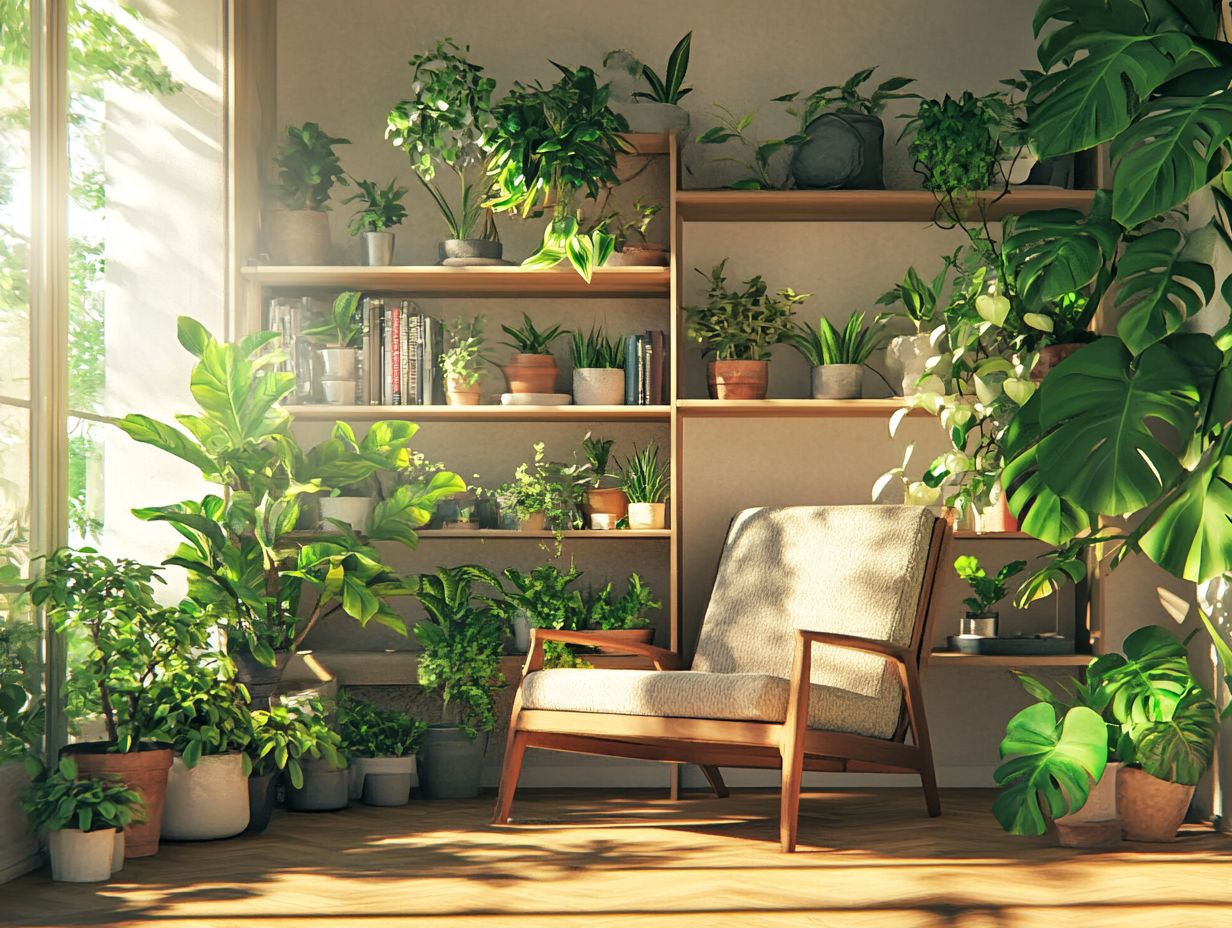
Understanding Stress in Plants
Understanding stress in plants is crucial, as it influences their growth and overall vitality. This is similar to how psychological stress affects mental wellness in humans.
Environmental changes, poor air quality, and insufficient light can contribute to stress in your houseplants, ultimately hindering their ability to flourish.
Recognizing the signs of stress in your plants can inform effective care strategies. This awareness fosters a calming atmosphere and enhances the lush presence of greenery in your indoor spaces.
Causes and Effects of Stress
The causes of stress in plants can originate from various sources, including environmental factors and inadequate care. These stresses can lead to negative effects like stunted growth and diminished air purification capabilities.
For instance, when your plants don t get enough natural light, they may stretch their stems and turn their leaves pale in a desperate bid for brighter conditions. Pest infestations are another serious concern; these unwelcome invaders can drain essential nutrients, resulting in wilting or leaf drop.
Harmful substances in the environment, such as chemicals from nearby industries, can jeopardize plant health by disrupting photosynthesis and nutrient uptake. Consequently, stressed plants don’t just suffer in isolation; they also compromise the overall ecosystem by failing to provide sufficient oxygen and habitat for wildlife. This highlights the intricate connections between plant health and environmental wellbeing.
Benefits of Stress-Free Plants
Stress-free plants provide a wealth of benefits that enhance their growth and your emotional well-being. They create a more harmonious indoor environment. Studies show that flourishing plants can significantly improve air quality, reduce anxiety, and boost productivity in spaces like your office or home.
Indoor plants boost happiness and comfort, positively impacting mental health especially during challenging periods such as the COVID-19 pandemic.
Improved Growth and Health
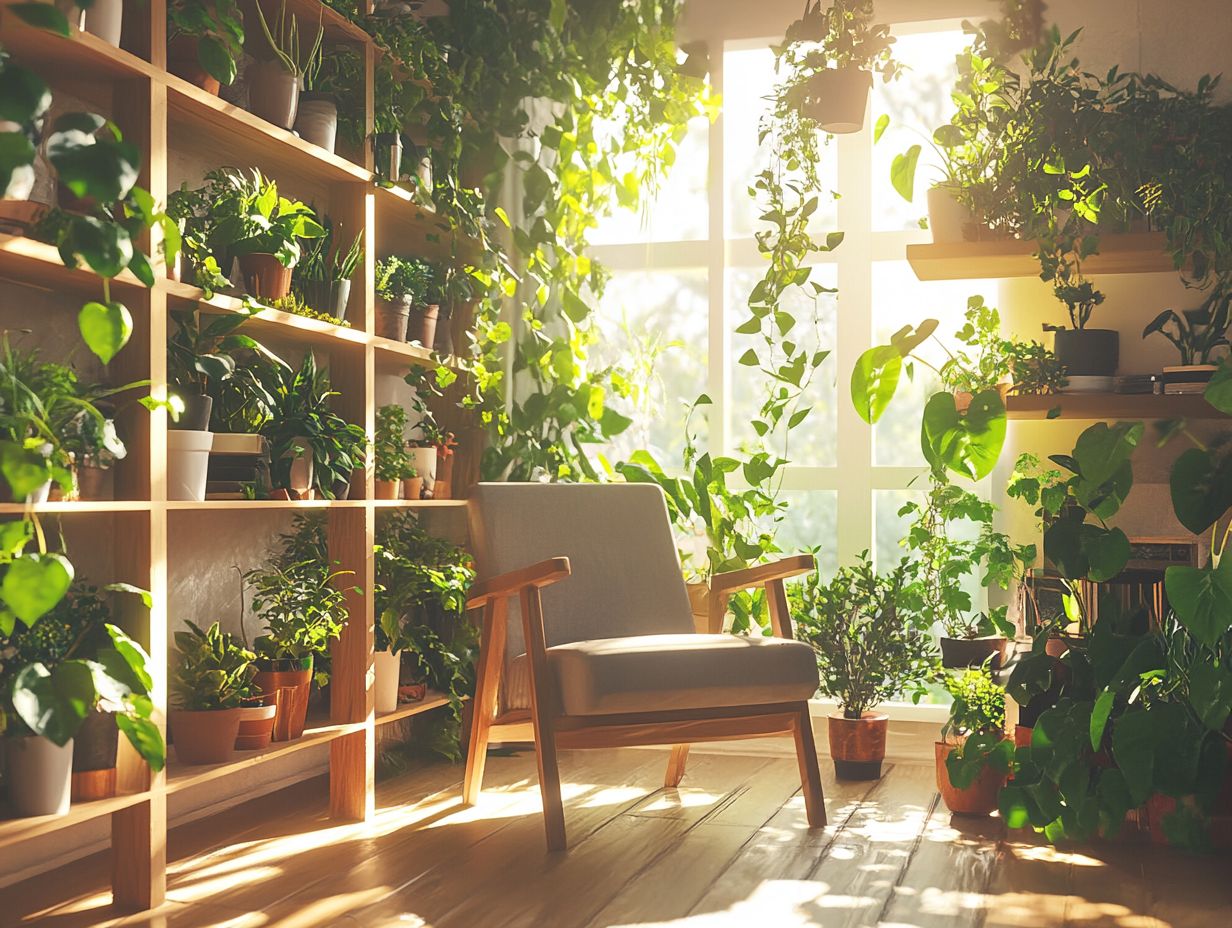
When you reduce stress for your plants, you’ll notice their growth and health improving significantly. This leads to more vibrant foliage and a robust overall appearance.
This enhanced vitality not only highlights nature s incredible resilience but also provides you with a profound sense of achievement and well-being. As you nurture these flourishing varieties, you may find comfort in the greenery around you, creating a calming environment that soothes the soul.
The psychological benefits of caring for thriving plants extend well beyond aesthetics; they evoke positive feelings associated with life and growth. By minimizing stressors like inadequate light, poor soil quality, or pesky infestations, you can cultivate a harmonious relationship with nature that fosters both your plants’ and your own flourishing.
Start creating your stress-free plant paradise today!
Identifying and Managing Stress in Plants
Identifying and managing stress in plants is crucial for fostering their health and vitality. Just as we utilize stress-coping strategies for mental wellness, plants also need our care.
Signs of stress can appear in various forms, such as wilting leaves, discoloration, or stunted growth. Recognizing these signs and intervening promptly is vital to prevent further decline.
Effective management strategies include refining your watering practices, ensuring optimal light exposure, and using simple care techniques to support both plants and caregivers.
Signs and Symptoms of Stress
Recognizing the signs and symptoms of stress in your plants is essential for timely intervention. Common indicators include wilting leaves, discoloration, and reduced growth rates.
If ignored, these warning signals can lead to serious consequences, including the decline or even death of your beloved plants. For instance, persistent wilting might indicate root rot or inadequate watering. Discoloration often signals nutrient deficiencies or pest infestations. Unchecked issues can further compromise your plant s overall health. Stunted growth can suggest that your plant is struggling to absorb essential minerals, leading to developmental problems.
By understanding these early warning signs, you can take proactive measures to restore health and vitality, ensuring that your green companions not only survive but thrive.
Effective Stress Management Techniques
To effectively manage stress in your plants, make thoughtful adjustments to their care practices. This includes optimizing light exposure, enhancing air quality, and ensuring proper hydration.
By evaluating and modifying these routines, you create an environment that promotes healthy growth for your green companions. Simple tweaks like adding humidity trays or placing your plants in draft-free zones can significantly improve their well-being.
This attentive care not only supports your plants but also cultivates a sense of relaxation and fulfillment for you as a caregiver.
Nurturing your plants with mindful techniques creates a remarkable emotional impact. As you watch your greenery thrive, you’ll find yourself unwinding and reconnecting with nature in a meaningful way.
Choosing Stress-Resistant Plants

Selecting stress-resistant plants can greatly enhance your plant care experience. These resilient species flourish even in less-than-ideal conditions, fostering emotional resilience in you.
Best Options for Low-Stress Environments
For a low-stress environment, choose plants that are both resilient and low-maintenance for optimal growth and well-being.
- Aloe Vera: Thrives with minimal care and soothes skin irritations.
- Snake Plant: Known for its impressive air-purifying qualities, it flourishes in low light and requires little water.
- Pothos: A hardy vine that adapts easily while enhancing indoor air quality.
- Lavender: Offers a calming aroma and can be used in essential oils, making it ideal for relaxation and sleep.
These plants require little attention but uniquely contribute to your well-being, showcasing the remarkable versatility of greenery perfect for serene settings.
Creating a Stress-Free Environment for Plants
Creating a stress-free environment for your plants involves establishing optimal growing conditions that foster their health and well-being. This is similar to nurturing your own mental health, essential for building emotional resilience.
By paying attention to their needs, you cultivate not only a thriving garden but also a space that reflects balance and tranquility.
Take action today to create the best environment for your plants and enjoy the beauty and peace they bring into your life!
Optimal Growing Conditions and Maintenance Tips
To create the perfect environment for your indoor plants, it’s crucial to consider factors like light, water, and air quality. These elements directly impact their health and air purification abilities.
Take tropical plants like pothos, for example. They flourish in bright, indirect sunlight, making them a fantastic choice for well-lit areas that don t get direct sun. In contrast, succulents thrive in direct light, so placing them on windowsills where they can soak up those rays for hours is ideal.
Watering needs can vary widely. For instance, ferns love consistently moist soil, but beware overwatering can lead to root rot.
To elevate the visual appeal of your plant display, think about mixing textures. The smooth leaves of snake plants paired with the soft fronds of ferns can create an eye-catching arrangement. Regularly dusting off the leaves enhances their ability to absorb light. Maintaining optimal humidity levels will help keep them looking lush and healthy.
Frequently Asked Questions

What are stress-free plants?
Stress-free plants thrive in perfect conditions. They aren t affected by stressors that can slow their growth.
Why is it important to have stress-free plants?
Stress-free plants stay healthier. They resist pests better and grow more robustly, ensuring their overall vitality.
How can I create a stress-free environment for my plants?
To create a stress-free environment, provide the right amount of water, sunlight, and nutrients. Protect them from extreme temperatures and pests.
Are there certain plants that are more prone to stress?
Yes, some plants, like tropical varieties and young plants, are more sensitive to stress. It’s important to research each plant’s specific needs.
What are the benefits of having stress-free plants?
Having stress-free plants leads to healthier, more vibrant greenery. They also play a vital role in purifying the air and producing oxygen.
How can I tell if my plants are stressed?
Look for signs such as wilting leaves, yellowing or browning, stunted growth, and increased susceptibility to pests. Regularly checking on your plants and addressing any issues can help prevent stress and promote healthy growth.

